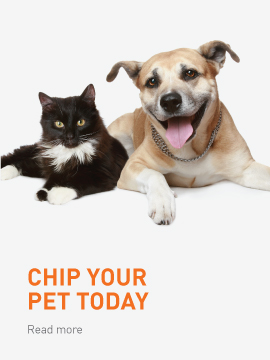The Rottweiler is a large size breed of domestic dog. The dogs were known as " butchers' dogs" because they were used to herding dog livestock and pull Dogcart (dog-drawn) laden with butchered meat and other products to market.The Rottweiler was employed in its traditional roles until the mid-19th century when railways replaced droving for herding livestock to market. While still used in herding, Rottweilers are now used as search and rescue dogs, as guide dogs for the blind, as guard dogs or police dogs, and in other roles.
History
Although a versatile breed used in recent times for many purposes, the Rottweiler is one of the oldest of herding breeds. A multi-faceted herding and stock protection dog, it is capable of working all kinds of livestock under a variety of conditions.The breed's history likely dates to the Roman Empire. It is likely that the Rottweiler is a descendant of ancient Roman drover dogs, a mastiff-type dog that was a dependable, rugged dog with great intelligence and guarding instincts. During their quest to conquer Europe, the Roman legion traveled in large numbers across the continent. The non-existence of refrigeration meant the soldiers had to bring herds of cattle with them on their excursions for food. These drover dogs were not only used to keep the herds of cattle together, but to guard the supply stock at night. Around 74 A.D. the Roman army travelled across the alps and into the southern part of modern day Germany. For the next two centuries the Roman drover dogs were continually utilized in herding and driving cattle for trade even after the Romans were driven out of the area by the Swabians.A town in this region was eventually given the name . The ADRK is recognised worldwide as the home club of the Rottweiler.In 1931 the Rottweiler was officially recognised by the American Kennel Club. In 1936, Rottweilers were exhibited in Britain at Crufts. In 1966, a separate register was opened for the breed. In fact, in the mid-1990s, the popularity of the Rottweiler reached an all-time high with it being the most registered dog by the American Kennel Club.
Health
Rottweilers are a relatively healthy, disease-free breed. As with most large breeds, Hip dysplasia (canine) can be a problem. For this reason the various Rottweiler breed clubs have had x-ray testing regimes in place for many years. Osteochondritis dissecans, a condition affecting the shoulder joints, can also be a problem due to the breed's rapid growth rate. A reputable breeder will have the hips and elbows of all breeding stock x-rayed and read by a recognised specialist, and will have paperwork to prove it.They will also have certificates that their breeding animals do not have entropion or ectropion and that they have full and complete dentition with a scissor bite.As with any breed, hereditary conditions occur in some lines. The Rottweiler is very prone to cancer which is among the most common causes of early death in Rottweilers. For unknown reasons, Rottweilers are more susceptible than other breeds to become infected with parvovirus, a highly contagious and deadly disease of puppies and young dogs. Parvovirus can be easily prevented by following a veterinarian's recommended vaccine protocol.If overfed or under exercised, Rottweilers are prone to obesity. Some of the consequences of obesity can be very serious, including arthritis, breathing difficulties, diabetes, heart failure, reproductive problems, skin disease, reduced resistance to disease and overheating caused by the thick jacket of fat under the skin.Breed surveys in the US, UK and Denmark puts the average lifespan of Rottweilers at 9 to 10 years.







